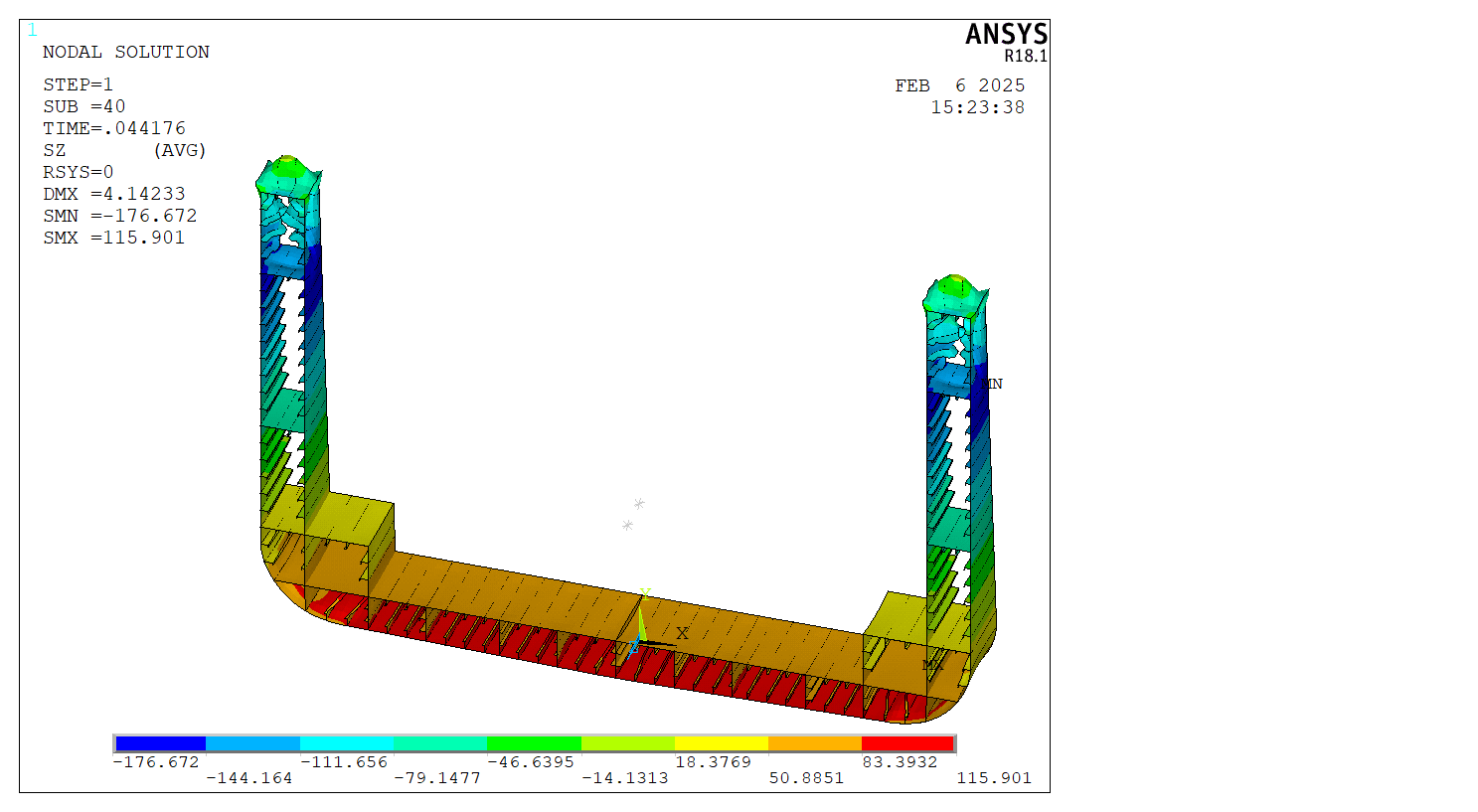The Effect of Torsion to the Longitudinal Strength on Container Ship
Main Article Content
Abstract
The large deck openings of ultra-large container ships greatly reduce their torsional stiffness, and hydroelastic analysis is a must for reliable structural design. In the initial design stage, the beam model is a rational choice. This study aims to investigate torsion's effect on container ships' strength using a numerical approach based on fatigue boundary conditions and ultimate boundary conditions in the midship region. Regarding fatigue boundary conditions, the dimensional influence of the container ship is obtained at the connection between the longitudinal side shell stiffeners and the transverse web frame for nine structural details, which refer to different arrangements of reinforcing elements. The structural influence on the local stress distribution was assessed along the longitudinal plates between the regular stiffeners bounding the perimeter of the torsion box by calculating the hull girder stresses.
Keywords: Container Ships, Cross Section, Torsion, Longitudinal Strength
Downloads
Article Details

This work is licensed under a Creative Commons Attribution 4.0 International License.
Allow anyone to modify, improve, and make derivative works, even for commercial purposes, as long as they credit to you for the original work.
References
[1] W. Wu, J. Lin. Productivity growth, scale economies, ship size economies and technical progress for the container shipping industry in Taiwan. 2015.
[2] Arthuo Silva Campillo, J.C. Suarez Bermejo, M. de Vicente. Design methodology in transverse webs of the torsional box structure in an ultra large container ship. Elsevier. 2021.
[3] K. Iijima, T. Shigemi, R. Miyake. A practical method for torsional strength assessment of container ship structures. Marine Structure. 2004.
[4] Weiq Liu, Qilu Zou, Yaqiang Zhang. Research on Structural Collapse of a Containership under Combined Bending–Torsion by Oblique Waves. Journal of Marine Science and Engineering. 2024
[5] Koh, T.J.; Paik, J.K. Structural failure assessment of a post-Panamax class containership: Lessons learned from the MSC Napoli accident. Ships Offshore Struct. 2015.
[6] Ostapenko, A.; Vaucher, A. Ultimate Strength of Ship Hull Girders under Moment, Shear and Torque; Report No. 453.6; Fritz Engineering Laboratory, Lehigh University: Bethlehem, PA, USA, 1980.
[7] Pedersen, P.T. Beam theories for torsional-bending response of ship hulls. J. Ship Res. 1991, 35, 254–265.
[8] Tanaka, Y.; Ogawa, H.; Tatsumi, A.; Fujikubo, M. Analysis method of ultimate hull girder strength under combined loads. Ships Offshore Struct. 2015
[9] Wang, C.; Wu, J.; Wang, D. Design similar scale model of a 10,000 TEU container ship through combined ultimate longitudinal bending and torsion analysis. Appl. Ocean Res. 2019.
[10] Zhong, Q.; Wang, D. Numerical investigation on ultimate strength of sandwich box girders under vertical bending and torsion. Ocean Eng. 2022.
[11] Lee, D.H.; Paik, J.K. Ultimate strength characteristics of as-built ultra-large containership hull structures under combined vertical bending and torsion. Ships Offshore Struct. 2020.
[12] Hu, K.; Yang, P.; Xia, T. Residual ultimate strength of large opening box girder with crack damage under torsion and bending loads. Ocean Eng. 2018.
[13] Jialong Jao, Zhenwei Chen, Lisi He. Numerical study on hydroelastic responses and bending-torsion coupled loads of a ship in oblique regular waves. Ocean Engineering. 2025.
[14] Qinghu Wang, Deyu Wang. Warping and shear behaviors involved in hull girder's torsional collapse process. 2020.
[15] Meng Zhang. Lianghui Sun, Yaogue Xie. A monitoring method of hull structural bending and torsional moment. Ocean Engineering. 2024.
[16] Arthuo Silva Campilo, Fransisco Perez. Effect of the torsion box dimension on local stress distribution and fatigue strength assesment of a container ship. Journalof marine science and engineering. 2022.

